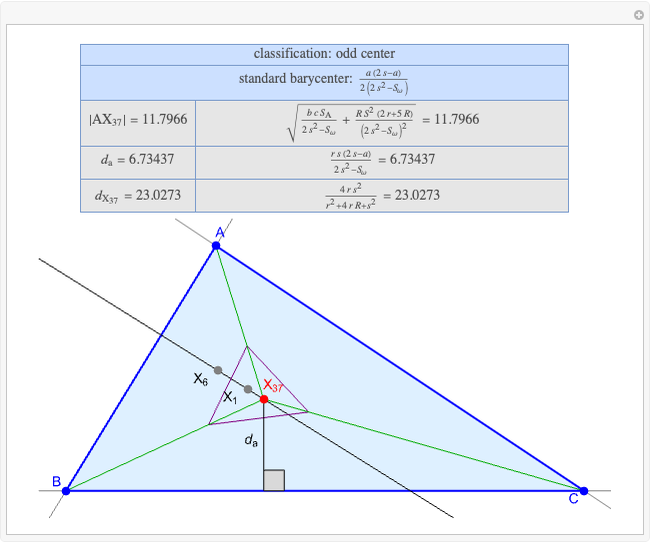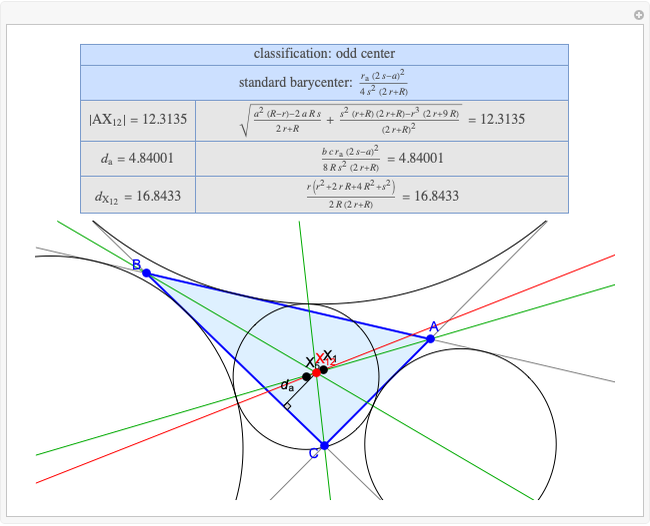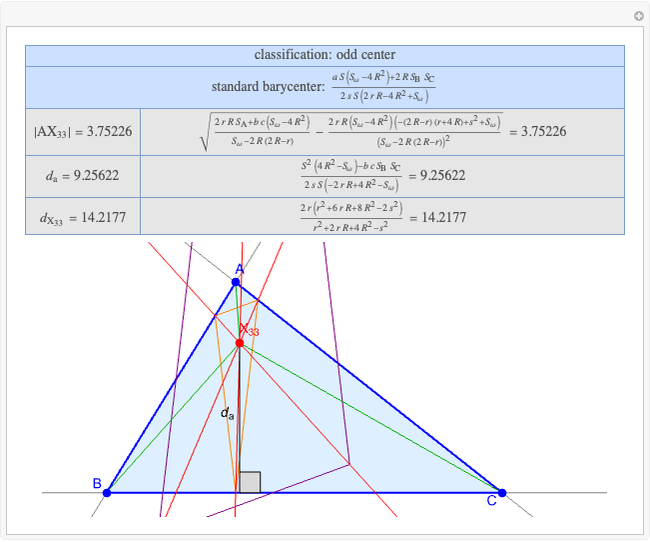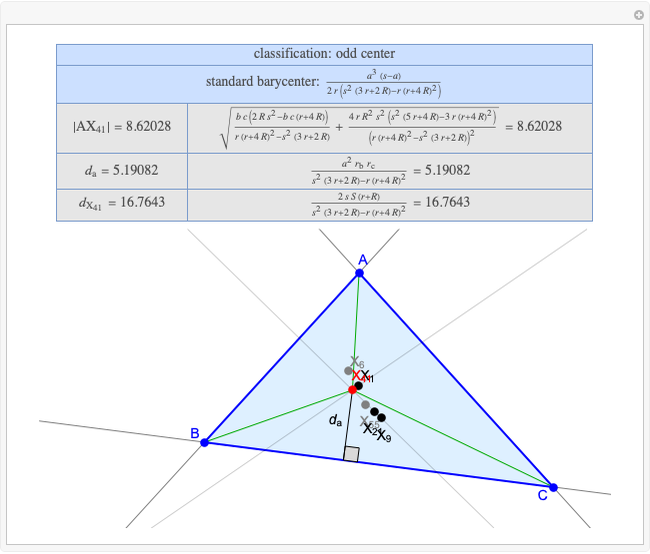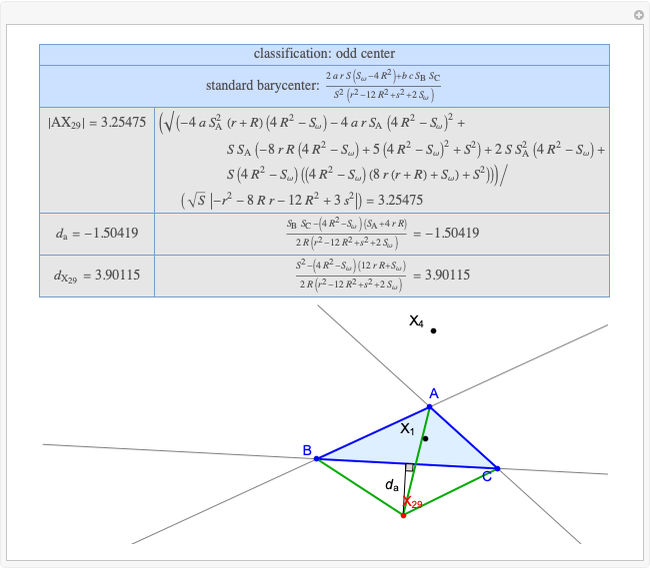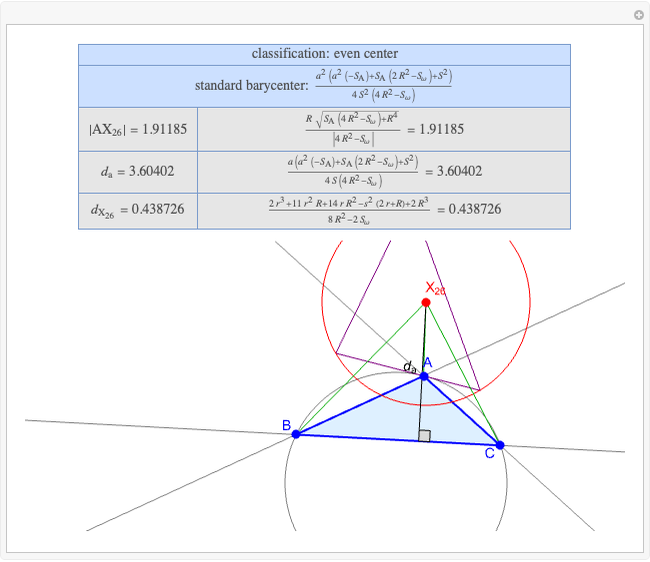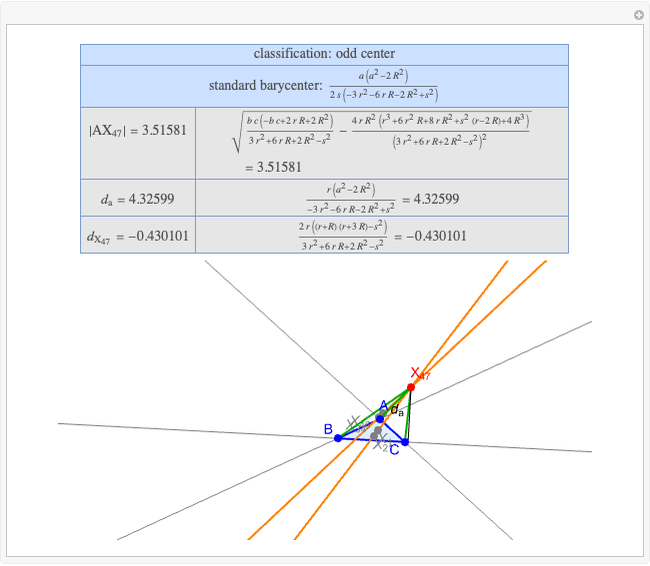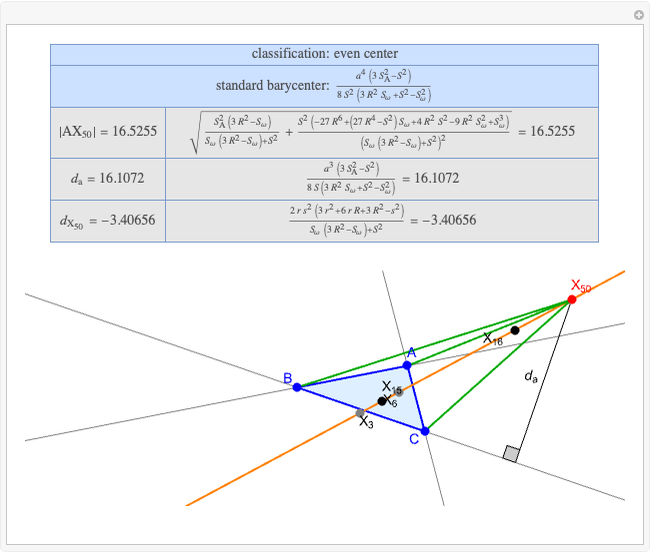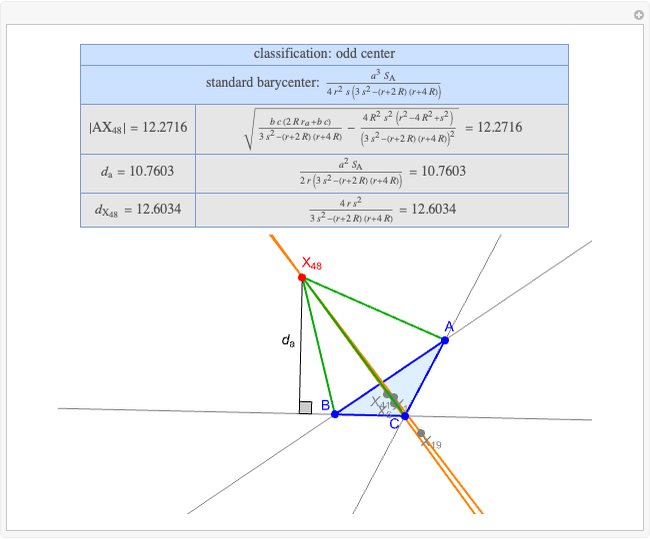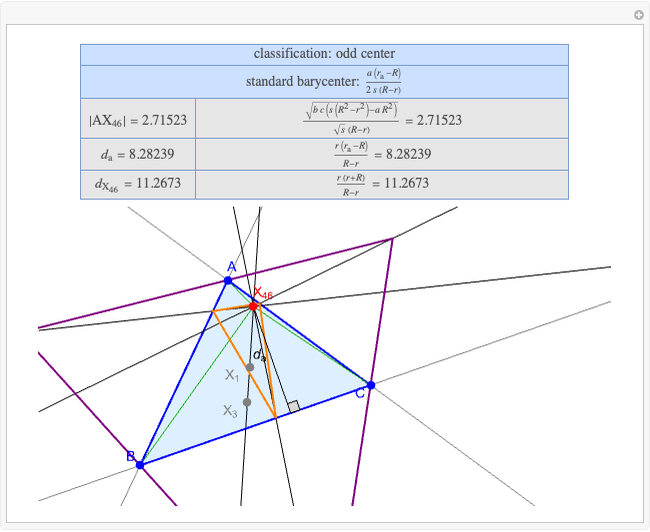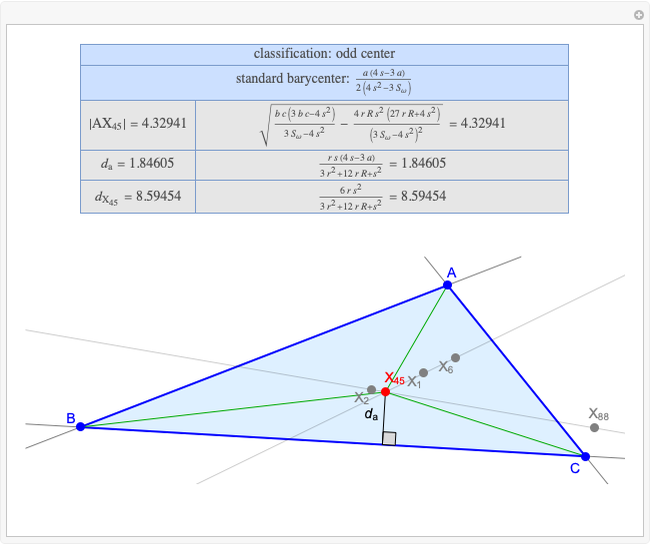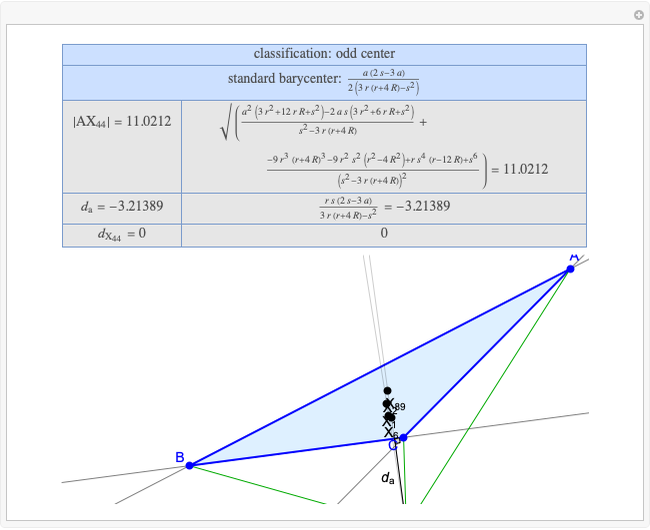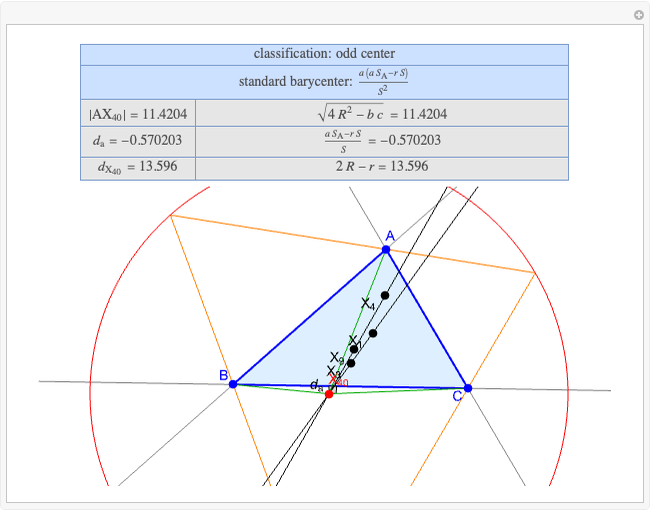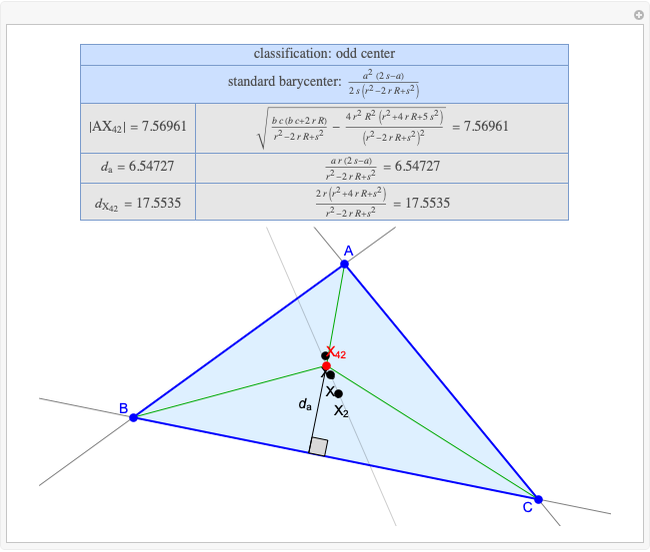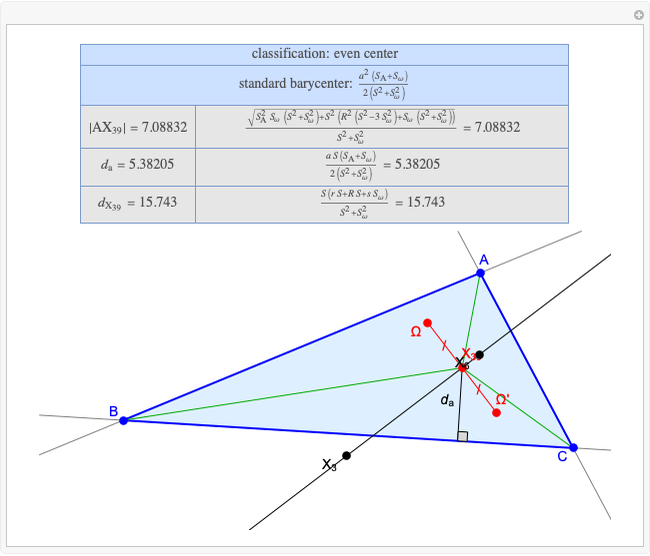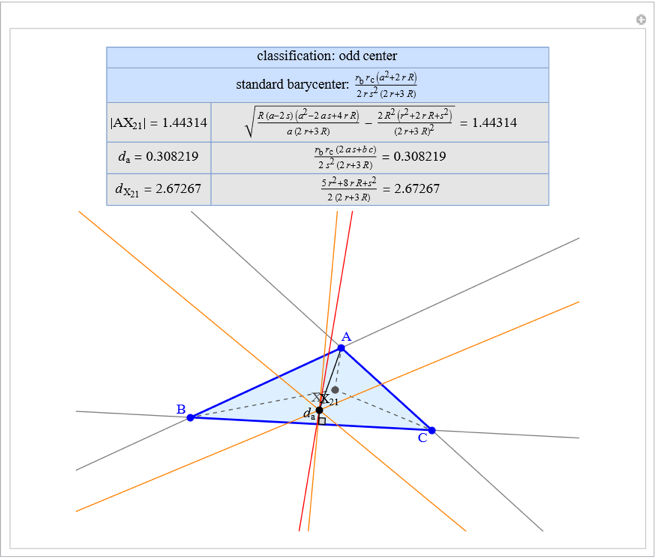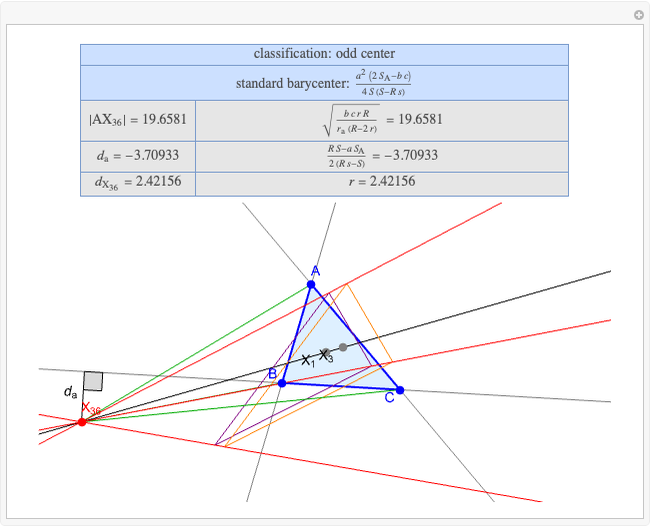Basic Parameters of the Kimberling Center X36

Requires a Wolfram Notebook System
Interact on desktop, mobile and cloud with the free Wolfram Player or other Wolfram Language products.
Given a triangle  , let
, let  be its circumcenter. Then the Kosnita triangle
be its circumcenter. Then the Kosnita triangle  is defined to have its vertices at the circumcenters of the circumcircles of
is defined to have its vertices at the circumcenters of the circumcircles of  ,
,  and
and  .
.
Contributed by: Minh Trinh Xuan (January 2023)
Open content licensed under CC BY-NC-SA
Snapshots
Details
A triangle center is said to be even when its barycentric coordinates can be expressed as a function of three variables  ,
,  ,
,  that all occur with even exponents. If the center of a triangle has constant barycentric coordinates, it is called a neutral center (the centroid
that all occur with even exponents. If the center of a triangle has constant barycentric coordinates, it is called a neutral center (the centroid  is the only neutral center). A triangle center is said to be odd if it is neither even nor neutral.
is the only neutral center). A triangle center is said to be odd if it is neither even nor neutral.
Standard barycentric coordinates of a point with respect to a reference triangle have a sum of 1.
Reference
[1] C. Kimberling. "Encyclopedia of Triangle Centers." (Oct 18, 2022) faculty.evansville.edu/ck6/encyclopedia.
Permanent Citation





































